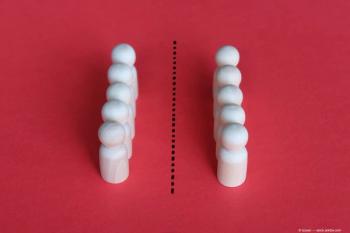
Visual acuity better with bilateral implantation
Bilateral implantation of an apodized diffractive multifocal IOL provides patients with better intermediate visual acuity, fewer visual disturbances, and less difficulty with visual tasks compared with contralateral implantation.
These two apodized diffractive IOLs are commercially available, and the +3.0 D model is the newer of the two lenses.
The important differences between the two lenses, according to Dr. Ahmed, is that the add power is +3.0 versus +4.0 D at the IOL plane, the +3.0 D model has nine diffractive rings (compared with 12), and the central zone is slightly larger.
The +4.0 D model has the near focus at about 33 cm, while the +3.0 D model has moved more toward the range of intermediate vision at about 40 cm, said Dr. Ahmed, assistant professor, University of Toronto, and clinical assistant professor, University of Utah, Salt Lake City.
Two Canadian studies
Dr. Ahmed reported data that had been pooled from two Canadian studies conducted to compare the uncorrected binocular visual acuity and the overall satisfaction among patients who underwent contralateral implantation of the +3.0 and +4.0 D IOLs and those with bilateral implantation of the +3.0 D IOLs after cataract surgery. The studies were conducted at five sites.
The study protocols were identical; 33 patients received the +3.0 D IOLs bilaterally and 43 patients received contralateral +3.0 and +4.0 D IOLs. The mean patient age was young in the bilateral +3.0 D group compared with the other group.
The patients underwent measurement of the binocular uncorrected and corrected visual acuity at near, intermediate, and distance.
The subjective visual satisfaction was measured on a scale of 0 to 10, with 10 indicating the maximal satisfaction.
Visual disturbances were ranked on a scale of 0 to 5, with 5 indicating the most difficulty.
Newsletter
Don’t miss out—get Ophthalmology Times updates on the latest clinical advancements and expert interviews, straight to your inbox.


















































.png)


